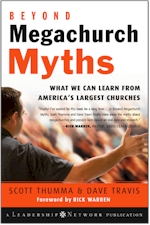Tools for mapping your congregation's context
- Plotting the church's membership -
This is a little tricky to learn but as long as you have a basic list of addresses of your members, you can go to one of the free mapping programs on the web and enter the data and then produce a map of where your congregational members live. Two mapping programs we have used are http://www.gpsvisualizer.com/ and http://www.batchgeocode.com/
- Mapping other churches in the area -
My favorite way to get an overview of the churches in an area is to use the tool attached to the Yahoo mapping site http://maps.yahoo.com/ or www.Mapquest.com or one of the other web-based mapping programs. After you put the address of your congregation as the mapping address and the map comes up, then select the link to show "Nearby Businesses." This will bring up the yellow pages program and you can search for "churches" (or "religion" if you want a broader category) around your study congregation.
- Religious census of your metro area or county -
One very easy way to do this is to analyze the "Churches and Church Membership Study" data collected every ten years for the metro area or county you want to explore. Go to the Association of Religion Data Archive www.thearda.com and select "Maps and Reports" then select the state and county or metro area you want. This will give you a listing of most of the congregations and adherents for both 1990 and 2000.
Given the increasing pluralism of our country you might want to explore the location of non-Christian religious groups. The easiest way to do this is to search The Pluralism Project’s web directory at www.pluralism.org/directory/search.php
- Demographics of your locale -
The foremost location for demographic information is the Census Bureau site itself U.S. Census Bureau www.census.gov. It is now very easy to use and find information on the site. You can also find many other important resources on the Census site such as the economic and community census.
Good places to start on the site are the sections labeled "American FactFinder" and “Census 2000.” Using the latter you can explore the 2000 census material by an explicit address, towns, counties, or states. You might also want to try FEDSTATS http://www.fedstats.gov/ which is a great repository for many federal government statistics. Much of this information is also downloadable to your computer for further analysis.
There are many other excellent census and survey data sources to be found on the web. Try the links at the Hartford Institute data resources page http://hirr.hartsem.edu/sociology/research_datasets.html
You might also want to try some of the free tools from companies such as Claritas or Percept
- Estimates of unchurched in your area -
The Percept website offers an interesting estimate of the persons in a certain zip code that claim to have no faith. Just go to their web site http://www.perceptgroup.com/ and type a zip code into the "zero faith by zip" feature and you can find your local mission field.
There are a number of good online survey programs. The best is probably SurveyMonkey but others include Zoomerang and InstantSurvey.
Links to the studies we used
The online megachurch database
The bibliography of writings about megachurches
Megachurch sermon video page
Guide for creating church websites
Additional links about studying congregations
|
